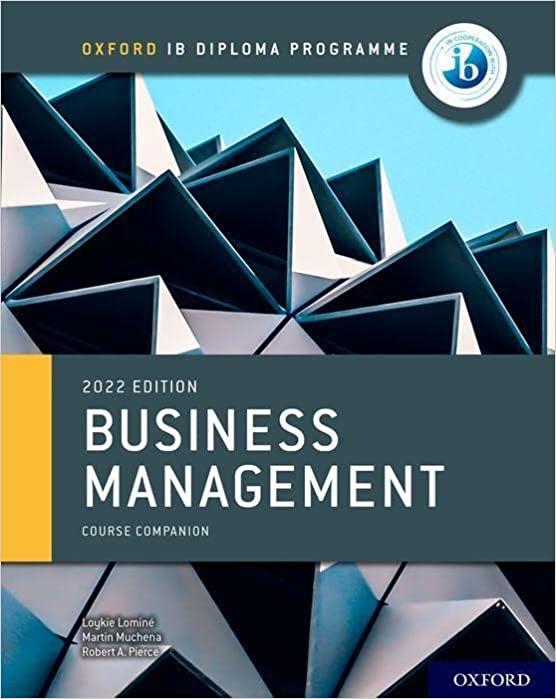Question
I do not nee chegg answer please, its wrong. (1bookmark) Question: Executing the Project Using your course textbook, ... Bookmark Executing the Project Using your
I do not nee chegg answer please, its wrong.
(1bookmark)
Question: Executing the Project Using your course textbook, ... Bookmark Executing the Project Using your course textbook, read the article "The Project Management Career Path at AT&T." (see Below)
Based on your research and reading, answer the following questions: How difficult it is to change a culture where project management is perceived as of low status and something to get out of? How would you approach such a task? What was the problem with the mentality of admiring heroic rescues of projects in trouble? What are the similarities or differences between the skills sought for project managers among business communication system's leadership continuity plan with those listed in the article? Using your course textbook, read the article "Risk Analysis vs. Budget/Schedule Requirements in Australia." Based on your research and reading, answer the following questions: If striving to meet schedule or budget isn't top priority, what is? Why? What type of risk analysis approach would have been most appropriate in this situation? Please provide your answers in a 3- to 4-page Microsoft Word document. Support your responses with examples.
Project Management in Practice
The Project Management Career Path at AT&T
As a result of the many organizational and technological changes in the telecommunications industry, AT&T realized that the old ways of doing business would not be competitive in the new market they now faced and decided to revamp their whole process of providing technology to the market. They decided that organizing by project management would give them better control over their business and bring them a competitive advantage. Thus, they set the goal of becoming the leader in project management in the industry.
AT&T had previously used project managers in many of its activities but in a significantly different way. For instance, it was more a project coordination responsibility that could be successfully completed through achieving the activities on a task list. However, the position was of low status and seen as only a temporary activity serving to carry someone on to a better functional manager position. Thus, the reward for doing a good job was to move into a functional position and get out of project management.
AT&T realized it would have to change the whole nature of the project management role, and the entire structure of the organization as well, if it were to be successful in this strategy. They needed to develop professional project managers, plus a support system to maintain their abilities and careers in project management. The managerial mentality of two or three years on a project and then moving on to a functional job had to be changed to an attitude of professional pride in project management and staying in the field for the remainder of their careers. Equally important, the organizational mentality of admiring heroic rescues of projects in trouble had to be replaced with admiration for doing a competent job from the beginning and time after time.
The reorganization for project management was a major project in itself, including the areas of candidate selection, education and training, compensation, career development, organizational restructuring, and methods development. In terms of organizational structure, a National Project Management (NPM) organization was created at the corporate level, reporting to the service operating vice-president. Reporting to the director of NPM were three project directors spread across the United States, a systems support organization, and a methods and support staff. Program managers, project managers, and their subordinates reported to the project directors. This structure provided an integrated, self-contained project management group.
The project management career path now consists of:
Trainee: a six-month position to learn about project management.
Cost Analysis/Schedule Engineer: a 6-18-month team position reporting to a project manager.
Site Manager: a 6-12-month position responsible for a large site and reporting to a program manager.
Small Project Manager: sole responsibility for a $1M to $3M revenue project.
Project Manager: responsible for $3M to $25M projects.
Program Manager: responsible for multiyear projects and programs over $25M.
Candidates for the project manager career track are selected from AT&T's Leadership Continuity Plan, a program to identify the people with the most potential to progress to middle and senior management levels of responsibility, as well as from career people within the organization. Particular skills sought are interpersonal leadership skills; oral and written communication skills; a presidential, big-picture perspective; political sensitivity; delegating, problem-solver orientation; optimistic, can-do attitude; planner mentality; kaizen (continuous improvement) spirit; and administrative, in-charge credibility.
AT&T's Project Management organization now includes a staff in Denver and groups of project managers in the major cities throughout the nation. These groups now manage over $500 million in a range of telecommunications projects, ranging in size from $1M to $92M. Their project management approach is deemed the most capable in the industry, setting the pace for AT&T's competitors.
Questions:
How difficult is it to change a culture where project management is perceived as of low status and something to get out of, to one where project management is respected? How would you approach such a task?
What was the problem with the mentality of admiring heroic rescues of projects in trouble?
Compare the skills sought for project managers among AT&T's Leadership Continuity Plan with those listed in the chapter.
Source: D. Ono, "Implementing Project Management in AT&T's Business Communications System,"PM Network, Vol. 4
Step by Step Solution
There are 3 Steps involved in it
Step: 1

Get Instant Access to Expert-Tailored Solutions
See step-by-step solutions with expert insights and AI powered tools for academic success
Step: 2

Step: 3

Ace Your Homework with AI
Get the answers you need in no time with our AI-driven, step-by-step assistance
Get Started


